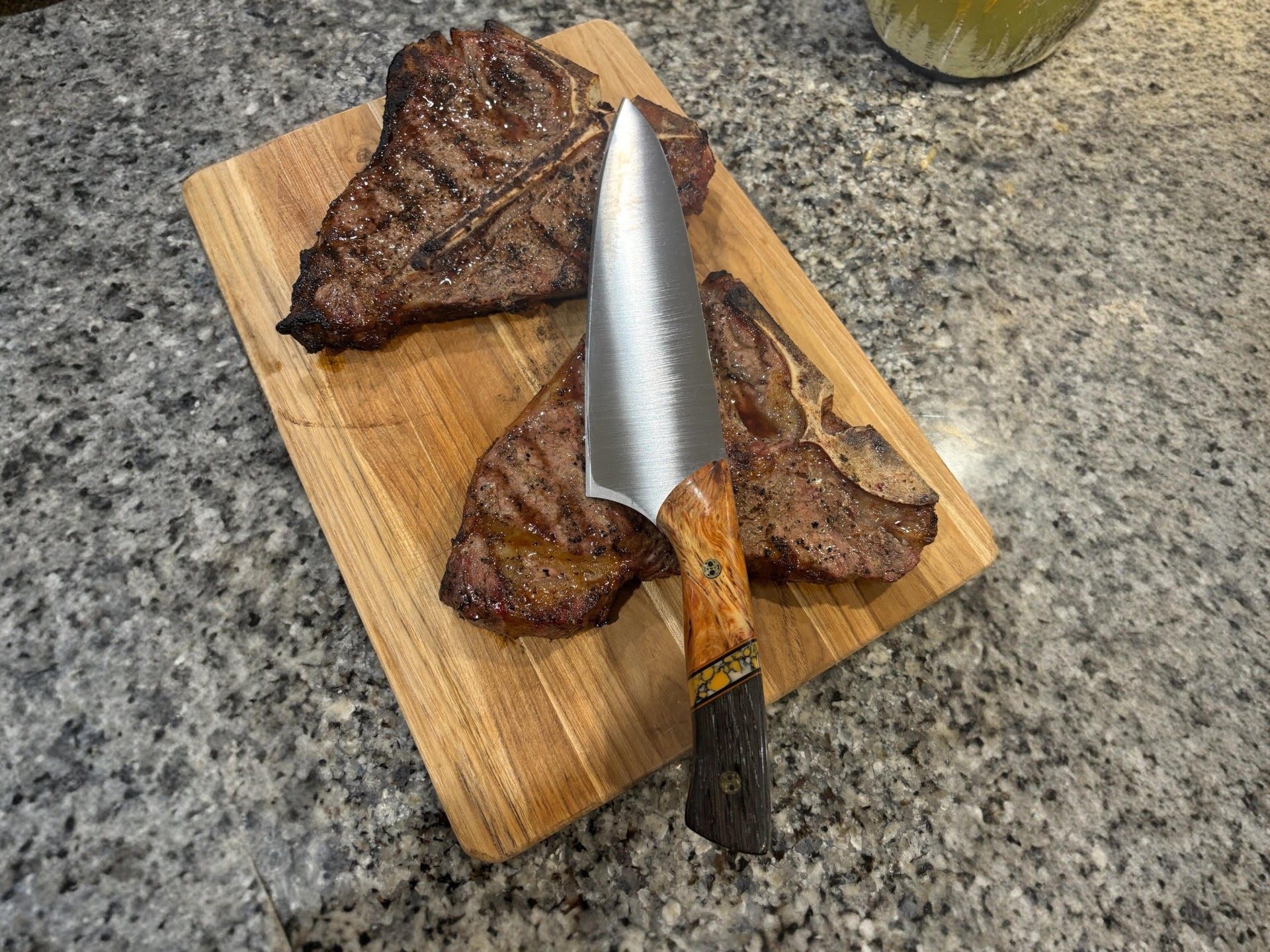Understanding Blade Thickness: The Key to Optimal Chef Knife Performance

When it comes to chef knives, the thickness of the blade is crucial for achieving the best performance in the kitchen. The right thickness can impact everything from cutting efficiency to overall durability. In this blog, we’ll explore the optimal thickness for chef knives and why it matters.
The Role of Blade Thickness
Blade thickness significantly influences how a knife performs during various culinary tasks. Generally, chef knives can range from thin (around .060 mm to .075 mm) to thick (over .150 mm).
- Thin Blades: Thinner blades excel in precision tasks such as slicing vegetables or filleting fish. They allow for clean, effortless cuts but may lack the stability needed for heavier chopping.
- Thick Blades: On the other hand, thicker blades provide more stability and strength, making them suitable for chopping and dicing tougher ingredients. However, they can struggle with fine slicing, leading to less precise cuts.
The Optimal Thickness for Chef Knives
For chef knives, an optimal blade thickness typically falls around .125 mm (1/8”). This thickness strikes a balance between sharpness and durability. It’s robust enough to handle a variety of tasks, from slicing meats to chopping vegetables, while still being thin enough to maintain precision.
The 1/8” thickness allows chefs to perform both heavy-duty chopping and more delicate tasks without switching knives. This versatility makes it an ideal choice for various cooking styles and techniques.
Durability and Maintenance
A blade thickness of .125 mm also contributes to a knife’s durability. It can withstand daily use without risking breakage or chipping, ensuring longevity in the kitchen. Furthermore, this thickness makes it easier to maintain and sharpen, allowing chefs to keep their knives in optimal condition for years to come.
Regardless of the task, understanding the impact of blade thickness and using the right tool for the job is essential for optimal performance and culinary enjoyment in the kitchen. When paired with the right task, a knife can yield efficiency and durability for chefs and armatures alike.

